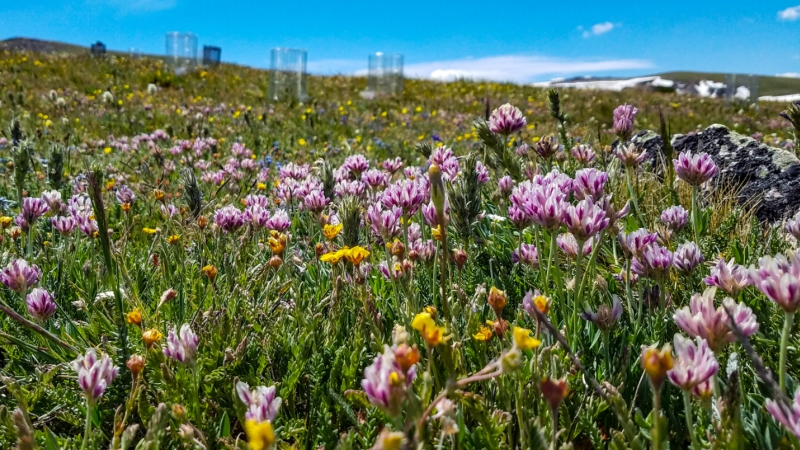An updated insect exclosure design for pollination ecology
DOI:
https://doi.org/10.26786/1920-7603(2021)651Abstract
Exclosures are a common method for quantifying the effects of animal pollinators on flowering plant species. However, a lack of standardized designs or clear descriptions of previously implemented exclosure designs decreases replicability in pollination studies and reduces scientific rigor. We summarized previous descriptions of pollination exclosure designs, and developed/tested a novel exclosure design in alpine environments on the Beartooth Plateau in northern Wyoming, USA. This exclosure design consists of a cylindrical internal wire frame, integrated ground stakes, and various mesh materials attached to the exterior. Exclosures on the plateau showed high efficacy in inhibiting insects from pollinating flowering plants, and nearly all of these exclosures remained functional throughout the time they were in place. Our updated exclosure design is effective, inexpensive, easy to produce, and widely applicable across differing ecosystems and experimental design types.

Downloads
Additional Files
Published
How to Cite
Issue
Section
License
Copyright (c) 2021 Troy Tetreault, Ken Aho

This work is licensed under a Creative Commons Attribution 4.0 International License.
JPE is an open access journal which means that all content is freely available without charge to the user or his/her institution.
Authors who publish with this journal agree to the following terms:
1) Authors retain copyright and grant the journal right of first publication with the work simultaneously licensed under a Creative Commons Attribution License that allows others to share the work with an acknowledgement of the work's authorship and initial publication in this journal.
2) Authors are able to enter into separate, additional contractual arrangements for the non-exclusive distribution of the journal's published version of the work (e.g., post it to an institutional repository or publish it in a book), with an acknowledgement of its initial publication in this journal.
3) Authors are permitted and encouraged to post their work online (e.g., in institutional repositories or on their website) prior to and during the submission process, as it can lead to productive exchanges, as well as earlier and greater citation of published work (See The Effect of Open Access).
To assure a broader targeted audience, content will be included into databases (such as EBSCO) and directories (such as DOAJ).











